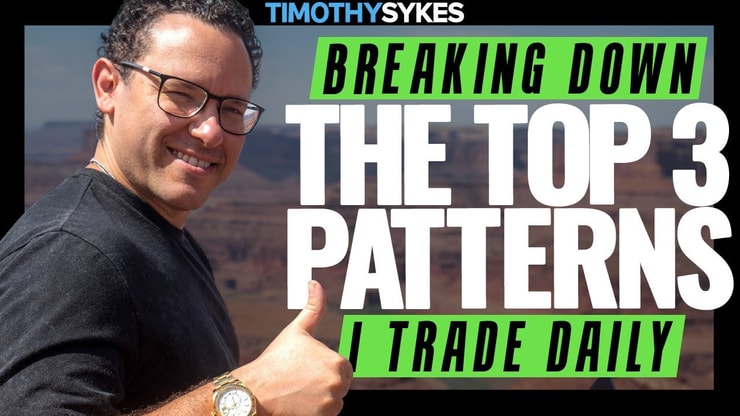*Written by AI, Edited by Humans
So you’re caught in the TradeStation vs thinkorswim dilemma, huh? Both are titans in the trading arena, each offering a smorgasbord of tools, features, and indicators. But here’s the kicker: they cater to different trading styles and needs.
And let’s not forget, TD Ameritrade, the broker behind thinkorswim, is in the process of merging into Charles Schwab. By late 2023, thinkorswim will be available to both Schwab and TD Ameritrade users. So, this isn’t just a choice; it’s about aligning your trading goals with the right platform.
We’re about to dissect each platform, from account types to trading fees and even the intricacies of margin trading. Whether you’re into stocks, options, forex, or even cryptocurrencies, this article is your ultimate guide.
Let’s get down to business. This is your comprehensive manual for choosing between TradeStation and thinkorswim. We’re covering everything from trading tools to research resources. Let’s get into it.
Table of Contents
What Is TradeStation?
TradeStation is a trading platform that’s been around for a while. It’s a favorite among seasoned traders and offers a wide range of products, from stocks and ETFs to futures and options. The platform is known for its robust trading tools and in-depth market analysis features. If you’re looking to get into futures contracts or want a platform that offers a lot of custom indicators and backtesting features, TradeStation might be your go-to.
But it’s not all sunshine and rainbows. TradeStation has its own set of fees and commissions that can eat into your funds. The platform offers two main plans: TS GO and TS Select, each with its own fee structure and access to different tools and resources. So, you’ve got to be mindful of that when making your choice.
What Is Thinkorswim?
Thinkorswim is TD Ameritrade’s trading platform, soon to be part of Charles Schwab. This platform is a haven for options traders, offering a plethora of tools, including custom indicators and a wide range of assets like stocks, bonds, and even cryptocurrencies. If you’re a beginner, thinkorswim has a ton of resources and research tools to get you up to speed.
The platform is also known for its user-friendly interface, both on desktop and mobile. It offers real-time quotes and a range of charting tools that can make any trader feel like a pro. But like TradeStation, thinkorswim has its own trading fees, so keep an eye on that.
Of course, thinkorswim isn’t the only TradeStation alternative. You might be wondering how it stacks up against Webull. Both platforms have their merits, and choosing between them can come down to your specific trading needs. For a comprehensive comparison between thinkorswim and Webull, this guide will give you the insights you’re looking for.
TradeStation Vs Thinkorswim – Detailed Comparison
Alright, let’s get into the meat of the matter: TradeStation vs thinkorswim. Both of these trading platforms are powerhouses, offering a plethora of features that can make any trader’s eyes light up. But here’s the kicker: they’re designed for different types of investing and trading. Whether you’re into stocks, options, or even cryptocurrency trading, one of these platforms will likely suit you better than the other.
TradeStation is known for its robust charting tools and signals, catering to traders who love diving deep into market analysis. On the flip side, thinkorswim shines with its user-friendly app and a wide array of investment options, from securities to cryptocurrencies. Both platforms offer real-time information and execution capabilities that are top-notch.
Choosing between these two platforms (and their brokers) boils down to what you need. Are you looking for advanced charting and order execution features? Or are you more interested in a platform that offers comprehensive watchlists and allows for investments across a number of asset classes, including the use of credit cards? Either way, you’re in for a treat with both of these platforms.
If you want to know my platform of choice — it’s StocksToTrade.
When it comes to charts, StocksToTrade is first on my list. It’s a powerful trading platform that integrates with most major brokers. I helped to design it, which means it has all the trading indicators, news sources, and stock screening capabilities that traders like me look for in a platform.
Grab your 14-day StocksToTrade trial today — it’s only $7!
Account Opening
Opening an account on either platform is relatively straightforward. TradeStation requires a minimum deposit, which varies depending on your choice between TS GO and TS Select plans. Thinkorswim, on the other hand, is more lenient with no minimum deposit requirements. Both platforms offer different account types, catering to the needs of both individual investors and institutional traders.
Trading Fees
When it comes to trading fees, both platforms have their pros and cons. TradeStation’s fee structure is more complex, with varying commissions based on your chosen plan and the assets you’re trading. Thinkorswim offers a more straightforward fee structure, especially for options and stock trading. Both platforms also offer margin accounts, but the fees can differ significantly.
More Breaking News
Margin Trading
Margin trading is available on both platforms, but the terms can vary. TradeStation offers competitive margin rates, especially if you’re into futures contracts. Thinkorswim also provides margin trading but focuses more on options and stocks. Both platforms require you to maintain a minimum balance in your margin accounts to avoid a margin call.
To expand on this point, while thinkorswim offers margin trading, it currently doesn’t offer the option to buy fractional shares. However, this feature is expected to be available after its merger with Charles Schwab by the end of 2023. To stay updated on this and other features, this guide has got you covered.
DayTrading and Swing Trading
Both platforms are equipped for day trading and swing trading. TradeStation offers automation and backtesting features that can be a boon for day traders. Thinkorswim shines with its range of indicators and real-time data, making it a solid choice for swing traders. Both platforms offer a high level of customization, allowing you to tailor your trading strategies.
If you’re seeking alternatives, you might be curious about the indicators thinkorswim offers. Knowing which indicators to use can make a world of difference in your trading strategy. To get a detailed rundown of the indicators available on thinkorswim, check out this resource.
Other Services & Features
TradeStation offers a range of additional services like market news and automation features. Thinkorswim isn’t far behind, offering a robust set of research tools and educational resources for beginners. Both platforms also offer paper trading accounts, allowing you to practice without risking real money.
Online & Mobile Experience
When it comes to online and mobile experience, thinkorswim takes the cake. The platform offers a seamless experience across desktop, web, and mobile. TradeStation also offers a good online experience but is more geared towards desktop platforms.
Tradable Instruments
Both platforms offer a wide range of tradable instruments. From stocks and ETFs to forex and cryptocurrencies, the choice is vast. TradeStation even offers futures contracts, while thinkorswim shines in the options trading department.
Charting
Charting tools are robust on both platforms. Thinkorswim offers advanced charting features with custom indicators and strategies. TradeStation also offers solid charting tools but excels in offering a platform for backtesting and automation.
Pricing
Pricing is a crucial factor in choosing between the two platforms. TradeStation has a more complex pricing structure with its TS GO and TS Select plans. Thinkorswim is more straightforward, especially when it comes to trading fees for stocks and options.
Who Is TradeStation For?
TradeStation is for the trader who loves to dive deep into market analysis and backtesting. It’s a platform that offers a lot of customizability and is geared towards the more experienced trader. If you’re into futures contracts or want a platform that offers a lot of custom indicators and backtesting features, TradeStation might be your go-to.
Who Is Thinkorswim For?
Thinkorswim is a more beginner-friendly platform, offering a ton of resources and research tools to get you up to speed. It’s also a haven for options traders, offering a plethora of tools, including custom indicators and a wide range of assets like stocks, bonds, and even cryptocurrencies.
Trading isn’t rocket science. It’s a skill you build and work on like any other. Trading has changed my life, and I think this way of life should be open to more people…
I’ve built my Trading Challenge to pass on the things I had to learn for myself. It’s the kind of community that I wish I had when I was starting out.
We don’t accept everyone. If you’re up for the challenge — I want to hear from you.
Apply to the Trading Challenge here.
Trading is a battlefield. The more knowledge you have, the better prepared you’ll be.
Which platform do you use? Let me know in the comments — I love hearing from my readers!
Frequently Asked Questions
Is TradeStation Only for US Citizens?
No, TradeStation is not limited to US citizens. The platform offers its services to international customers as well, although the range of available products may vary.
Is TradeStation Better Than TD Ameritrade?
It’s not a matter of better or worse; it’s about what suits your trading needs. TradeStation offers more in terms of futures contracts and custom indicators, while Thinkorswim shines in options trading and educational resources.
Can I Use Both TradeStation and Thinkorswim Simultaneously?
Yes, you can use both platforms simultaneously, although it might be overkill for most traders. Each platform offers a range of features that can meet most of your trading needs individually.
Which Platform Is More Beginner-Friendly: TradeStation or Thinkorswim?
Thinkorswim is generally more beginner-friendly, offering a range of educational resources and research tools to help you get started. TradeStation is more geared towards experienced traders who are looking for in-depth analysis and backtesting features.






Leave a reply